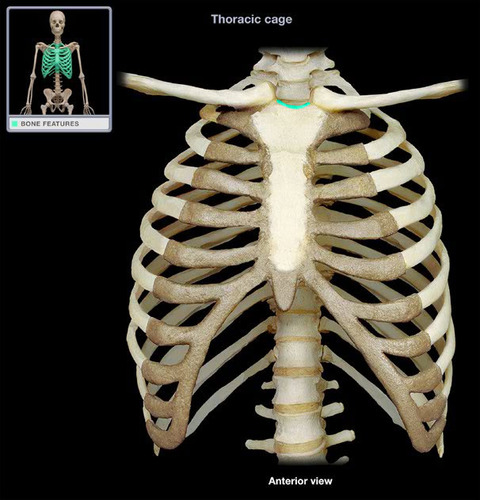Bio Lab Week 5 Bones
0.0(0)
0.0(0)
Card Sorting
1/172
Earn XP
Description and Tags
Study Analytics
Name | Mastery | Learn | Test | Matching | Spaced |
|---|
No study sessions yet.
173 Terms
1
New cards
Ethmoid bone
an unpaired cranial bone that is a significant component of the upper nasal cavity and the nasal septum
(think in the nose)
(think in the nose)
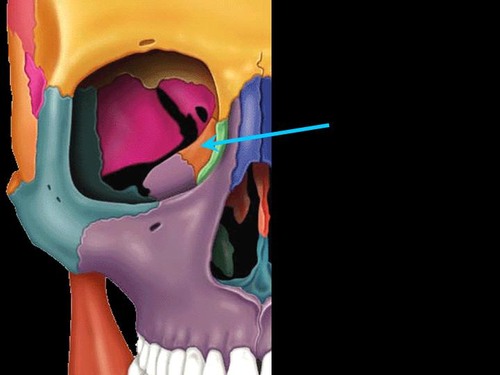
2
New cards
Frontal bone
supporting the head's structures and protecting the brain, including the eyes and nasal passages.

3
New cards
Inferior nasal concha
one of the three paired nasal conchae in the nose. It extends horizontally along the lateral wall of the nasal cavity and consists of a lamina of spongy bone, curled upon itself like a scroll

4
New cards
lacrimal bone
a small bone forming part of the eye socket.
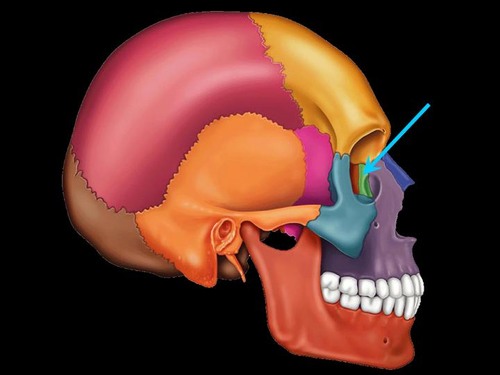
5
New cards
mandible
the largest bone in the human skull. It holds the lower teeth in place, it assists in mastication and forms the lower jawline.

6
New cards
Maxilla
the jaw or jawbone, specifically the upper jaw in most vertebrates. In humans it also forms part of the nose and eye socket.
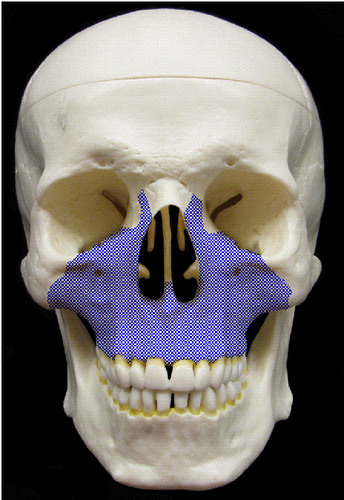
7
New cards
nasal bone
a small, flat bone of the skull
It makes up the facial skeleton
It makes up the facial skeleton
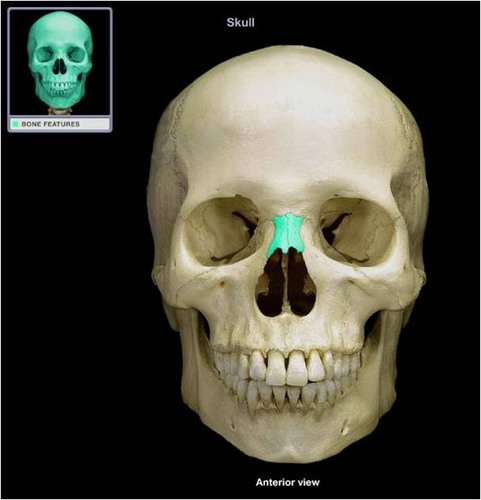
8
New cards
occipital bone
the bone that forms the back and base of the skull, and through which the spinal cord passes.
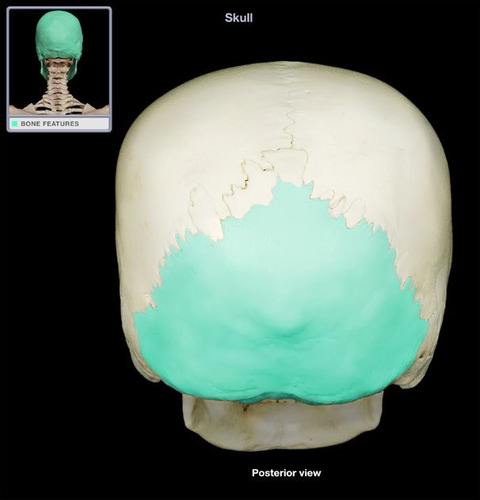
9
New cards
palatine bone
a paired bone located between the maxillae and the pterygoid process of the sphenoid bone. It participates in building the three cavities within the skull; the oral cavity, nasal cavity and the orbits.

10
New cards
parietal bone
two bones in the skull which, when joined at a fibrous joint, form the sides and roof of the cranium.
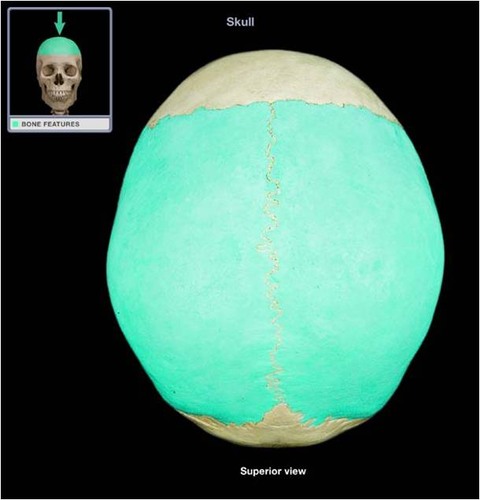
11
New cards
sphenoid bone
a compound bone that forms the base of the cranium, behind the eye and below the front part of the brain. It has two pairs of broad lateral "wings" and a number of other projections, and contains two air-filled sinuses.

12
New cards
temporal bone
a pair of bilateral, symmetrical bones that constitute a large portion of the lateral wall and base of the skull
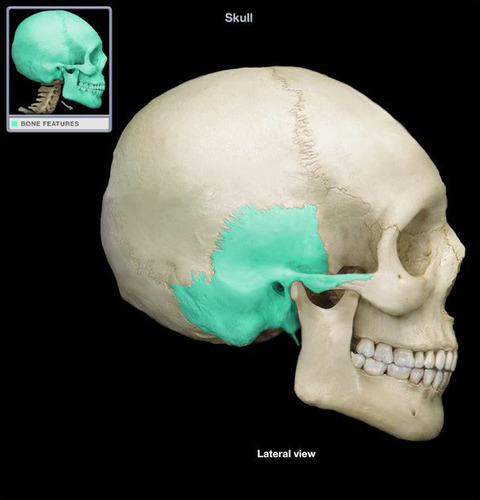
13
New cards
vomer bone
a small, thin, plow-shaped, midline bone that occupies and divides the nasal cavity
(it's really tiny and in the nose)
(it's really tiny and in the nose)
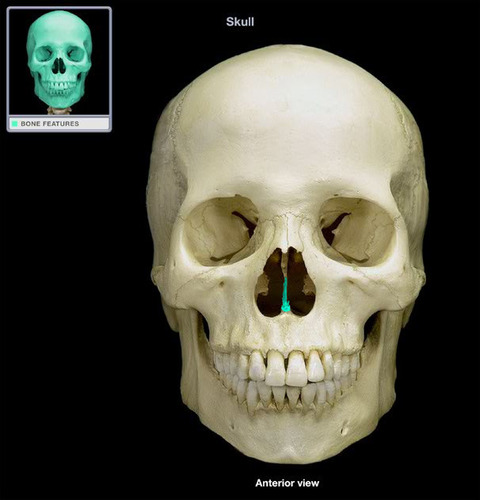
14
New cards
zygomatic bone
the bone that forms the prominent part of the cheek and the outer side of the eye socket.
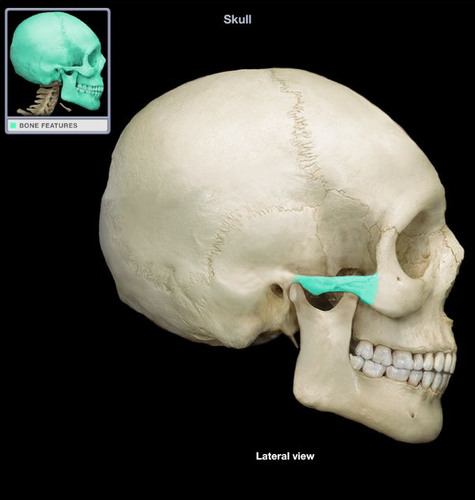
15
New cards
false ribs
do not join the sternum directly but are connected to the 7th rib by cartilage.
ribs 8,9, and 10
ribs 8,9, and 10
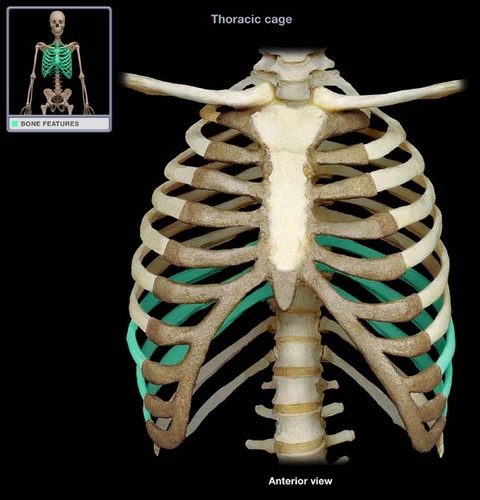
16
New cards
floating rib
half the size of the others and do not reach the front of the body.
ribs 11 and 12
ribs 11 and 12
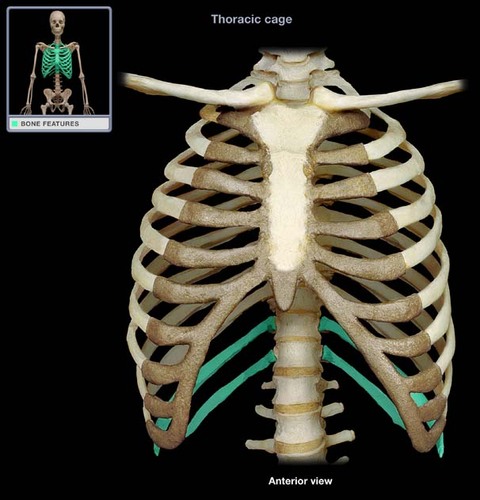
17
New cards
manubrium
the broad upper part of the sternum. It has a quadrangular shape
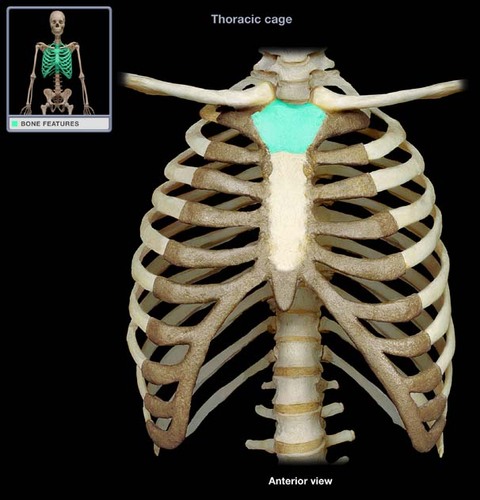
18
New cards
sacrum
a shield-shaped bony structure that is located at the base of the lumbar vertebrae and that is connected to the pelvis
(think bone above tailbone)
(think bone above tailbone)
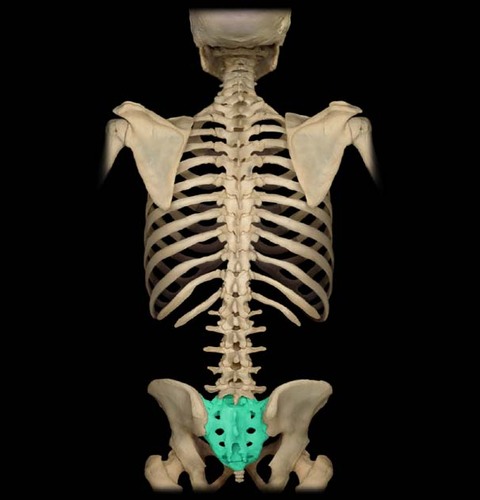
19
New cards
coccyx
a small triangular bone at the base of the spinal column in humans and some apes, formed of fused vestigial vertebrae
(think pointy part of butt, tailbone almost)
(think pointy part of butt, tailbone almost)
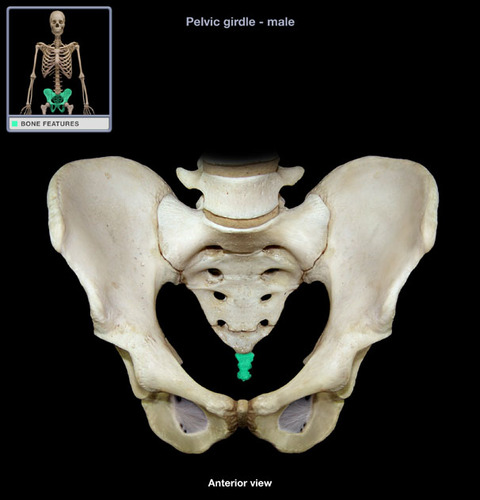
20
New cards
hyoid
a small U-shaped (horseshoe-shaped) solitary bone, situated in the midline of the neck anteriorly at the base of the mandible and posteriorly at the fourth cervical vertebra
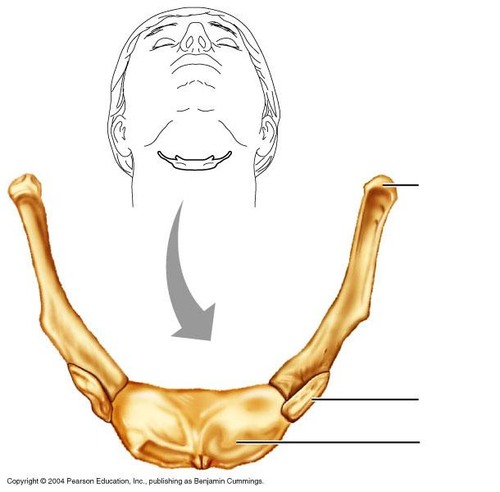
21
New cards
sternum
a partially T-shaped vertical bone that forms the anterior portion of the chest wall centrally. The ... is divided anatomically into three segments: manubrium, body, and xiphoid process. The ... connects the ribs via the costal cartilage forming the anterior rib cage
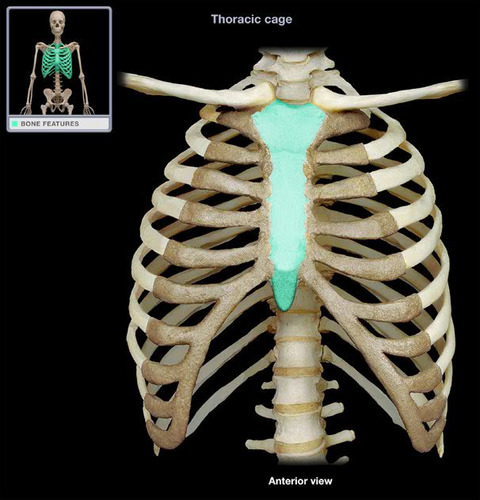
22
New cards
true ribs
The first seven bones are called the true ribs. These bones are connected to the spine (the backbone) in the back. In the front, the .... are connected directly to the breastbone or sternum by a strip of cartilage called the costal cartilage.
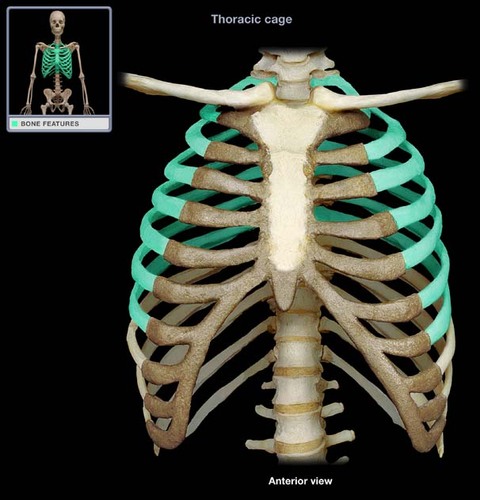
23
New cards
xiphoid process
the smallest region of the sternum, or breastbone.
the cartilaginous section at the lower end of the sternum, which is not attached to any ribs, and gradually ossifies during adult life.
(think end point of the sternum)
the cartilaginous section at the lower end of the sternum, which is not attached to any ribs, and gradually ossifies during adult life.
(think end point of the sternum)
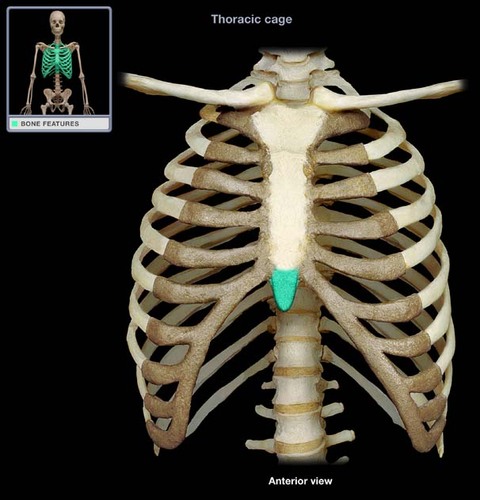
24
New cards
Clavicle
the bone that connects the breastplate (sternum) to the shoulder.
(think should bone-facing towards the front, like a shoulder collarbone)
(think should bone-facing towards the front, like a shoulder collarbone)
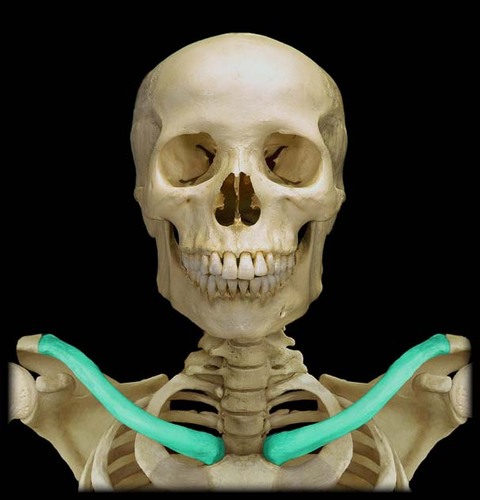
25
New cards
scapula
the bone that connects the clavicle to the humerus.
(think shoulder blades)
(think shoulder blades)
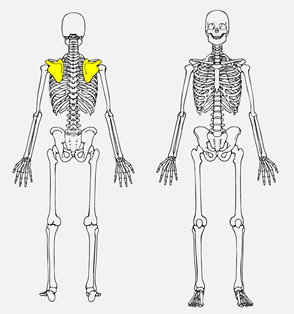
26
New cards
humerus
the bone of the upper arm or forelimb, forming joints at the shoulder and the elbow.
(think upper arm)
(think upper arm)
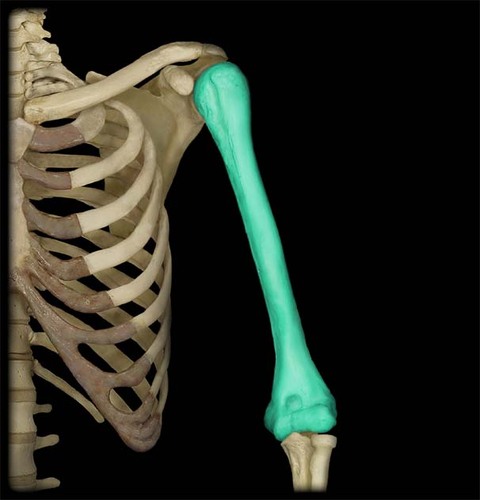
27
New cards
radius
one of the two bones that make up the forearm,
the other being the ulna. It forms the radio-carpel joint at the wrist and the radio-ulnar joint at the elbow. It is in the lateral forearm when in the anatomical position. It is the smaller of the two bones.
(think lower part of arm)
the other being the ulna. It forms the radio-carpel joint at the wrist and the radio-ulnar joint at the elbow. It is in the lateral forearm when in the anatomical position. It is the smaller of the two bones.
(think lower part of arm)

28
New cards
ulna
one of the two forearm long bones that, in conjunction with the radius, make up the antebrachium. The bone spans from the elbow to the wrist on the medial side of the forearm when in anatomical position. In comparison to the radius, the ... is described to be larger and longer.
(think lower part of the arm)
(think lower part of the arm)
29
New cards
phalanges (hand)
bones of the hand
distal (top, orange)
intermediate (under top, blue)
proximal (middle, green)
metacarpals (above bottom, under middle, yellow)
carpals (complete bottom, towards the wrist, purple)
distal (top, orange)
intermediate (under top, blue)
proximal (middle, green)
metacarpals (above bottom, under middle, yellow)
carpals (complete bottom, towards the wrist, purple)
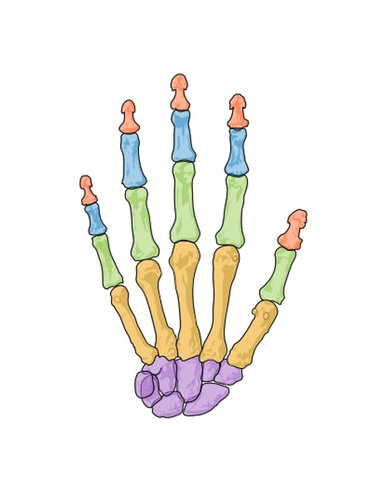
30
New cards
metacarpals
bones of the hand, middle region, above bottom (carpals) but below middle (phalanges)
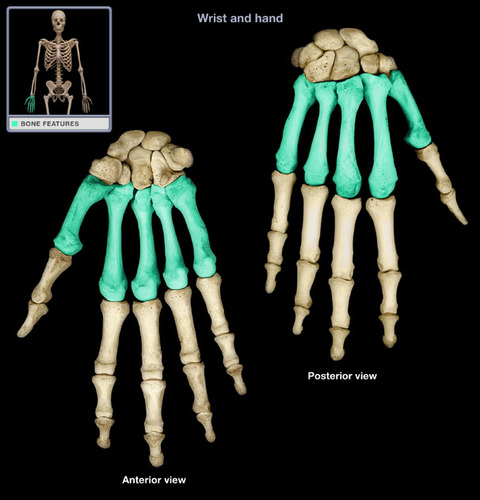
31
New cards
carpals
bones of the wrist, the very end of hand bones
below metacarpals, attached to the wrist
below metacarpals, attached to the wrist
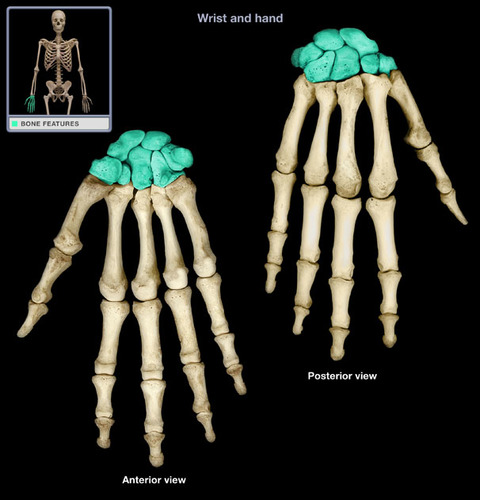
32
New cards
llium
the uppermost and largest part of the hip bone
(think the blades of the hips, in pelvis)
(think the blades of the hips, in pelvis)

33
New cards
ischium
a paired bone of the pelvis that forms the lower and back part of the hip bone, as well as the posterior and inferior boundary of the obturator foramen.

34
New cards
pubis
hip bone
the inner part of the ischium
the inner part of the ischium
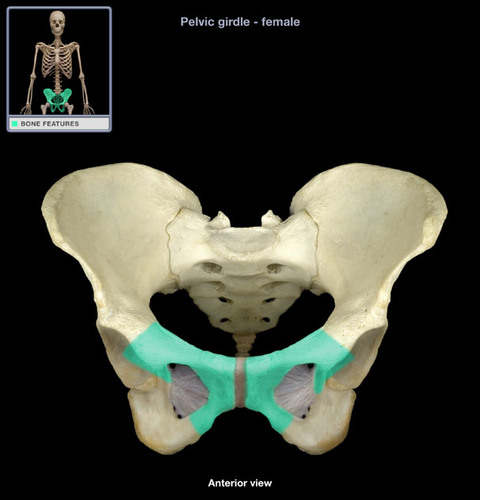
35
New cards
patella
the largest sesamoid bone in the human body and is located anterior to knee joint within the tendon of the quadriceps femoris muscle, providing an attachment point for both the quadriceps tendon and the patellar ligament
(think knee cap)
(think knee cap)
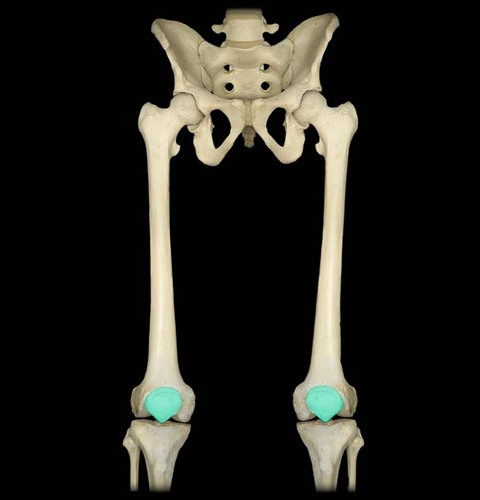
36
New cards
calcaneus
the largest of the tarsal bones in the foot. It lies at the back of the foot (hindfoot) below the three bones that make up the ankle joint.
(think heel of foot)
(think heel of foot)
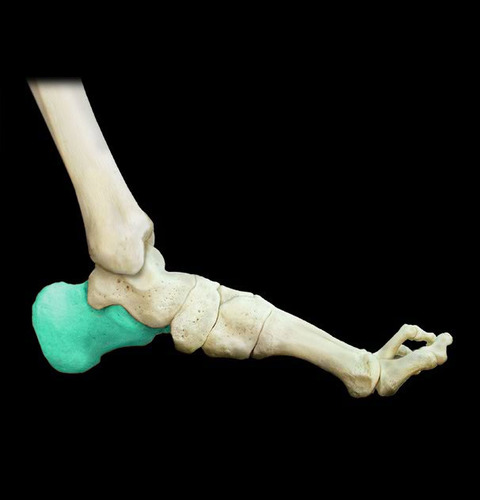
37
New cards
talus
the large bone in the ankle that articulates with the tibia of the leg and the calcaneum and navicular bone of the foot.
(think before heel of foot)
(think before heel of foot)
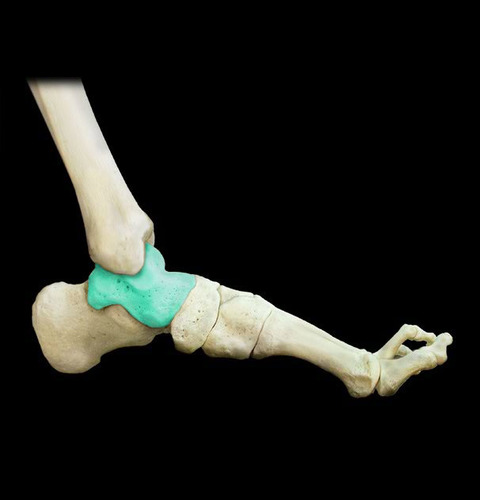
38
New cards
Phalanges (foot)
bones of the foot
distales (top)
mediae (under top, above middle)
promixales (just above middle)
metastari (middle, larger part)
ossa tarsi (bottom, right under middle)
distales (top)
mediae (under top, above middle)
promixales (just above middle)
metastari (middle, larger part)
ossa tarsi (bottom, right under middle)

39
New cards
metatarsals
the bones of the forefoot that connect the distal aspects of the cuneiform (medial, intermediate and lateral) bones and cuboid bone to the base of the five phalanges of the foot.
(the largest part of the foot bones, right before bottom)
(the largest part of the foot bones, right before bottom)
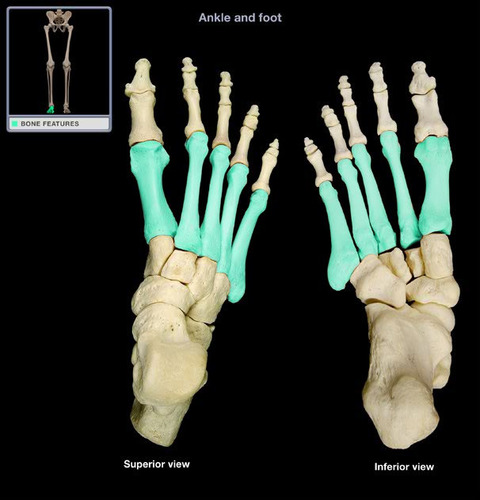
40
New cards
tarsals
ankle bone, bottom part of foot

41
New cards
carotid canal
the passage way in the temporal bone through which the internal carotid artery enters the middle cranial fossa from the neck
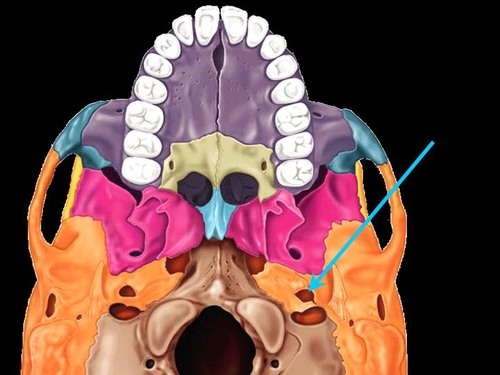
42
New cards
coronal plate
crowning or frontal body cut
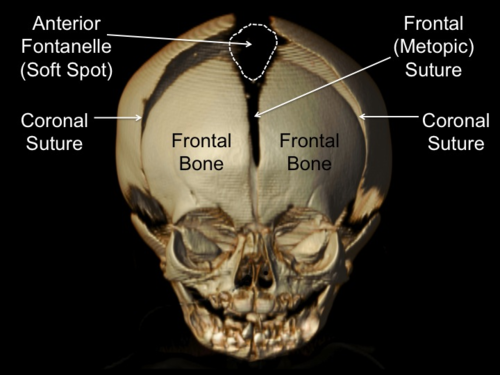
43
New cards
crista galli
a thick, midline, smooth triangular process arising from the superior surface of the ethmoid bone, projecting into the anterior cranial fossa.
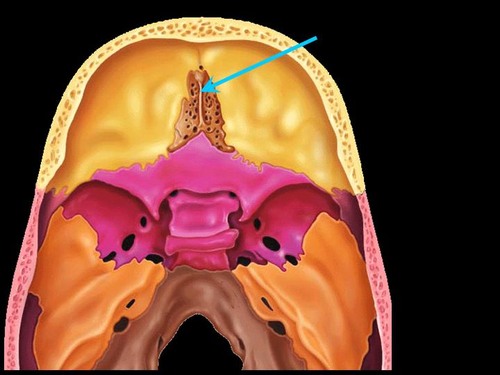
44
New cards
coronal suture
the transverse suture in the skull separating the frontal bone from the parietal bones.

45
New cards
external occipital protuberance
a normal anatomical structure located on the posterior surface of the occipital bone, at the level of the superior nuchal line.
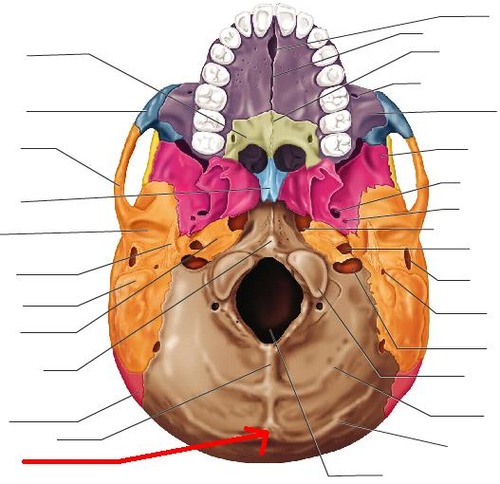
46
New cards
foramen lacerum
an irregular opening located in the middle cranial fossa at the base of the skull
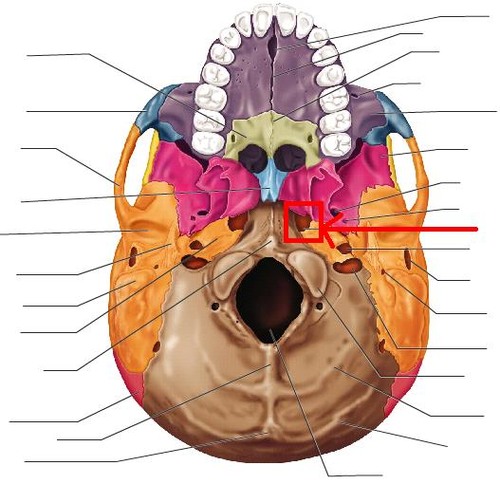
47
New cards
foramen magnum
a passage of the central nervous system through the skull connecting the brain with the spinal cord.
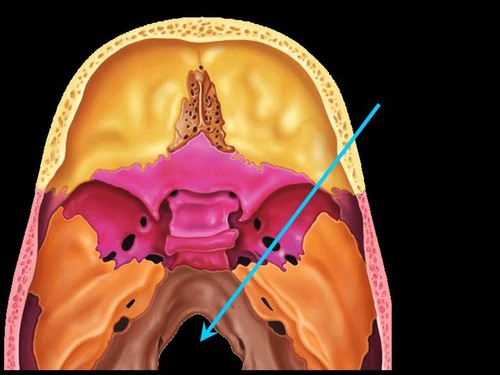
48
New cards
foramen ovale
an oval shaped opening, placed obliquely in the base of the skull.
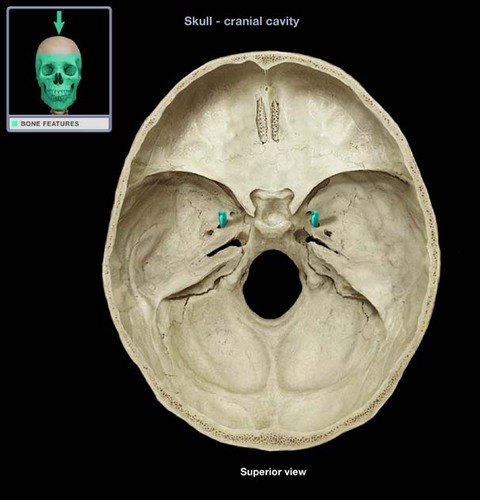
49
New cards
glabella
the smooth part of the forehead above and between the eyebrows
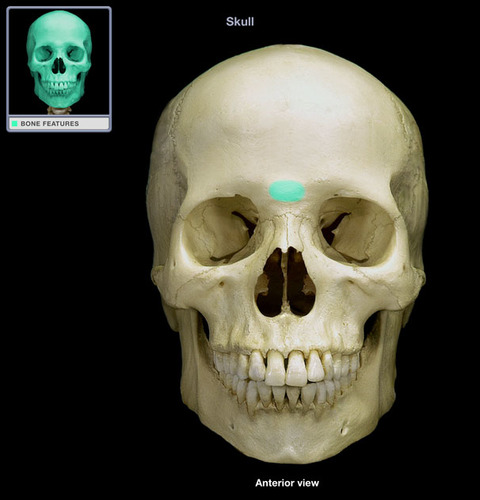
50
New cards
incisive fossa
the area between the mental eminence and the inferior incisor teeth
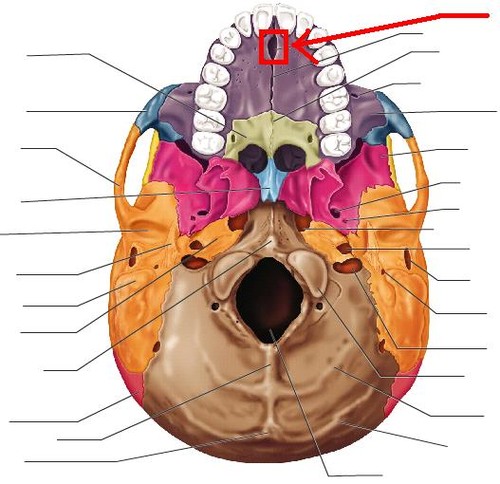
51
New cards
inferior orbital fissure
fissure in the orbit floor between maxilla and greater wing of sphenoid
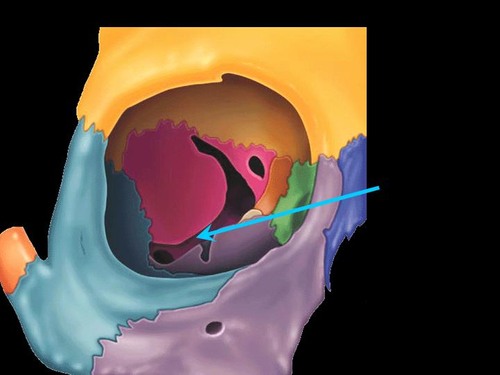
52
New cards
infraorbital foramen
one of two small holes in the skull's upper jawbone (maxillary bone), located below the eye socket and to the left and right of the nose.
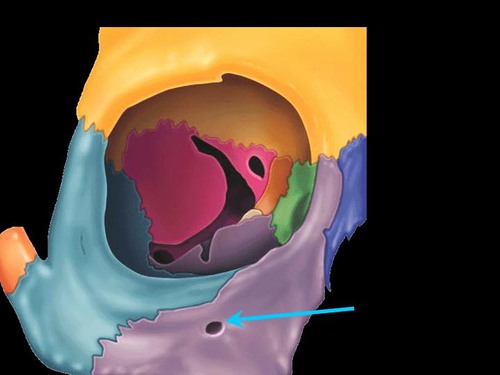
53
New cards
jugular foramen
a cavity formed by the petrous part of the temporal bone anteriorly and the occipital bone posteriorly.
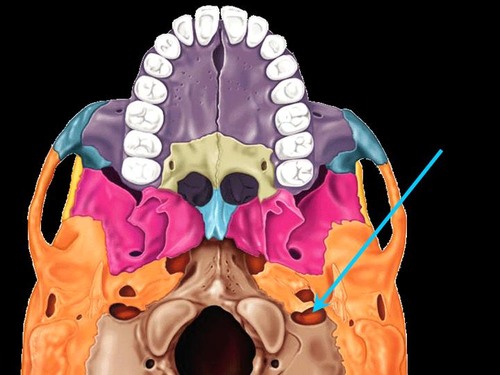
54
New cards
mandibular condyle
Articulation point of the mandible with the mandibular fossa of the temporal bone

55
New cards
mandibular fossa
the depression in the temporal bone into which the condyle of the mandible fits
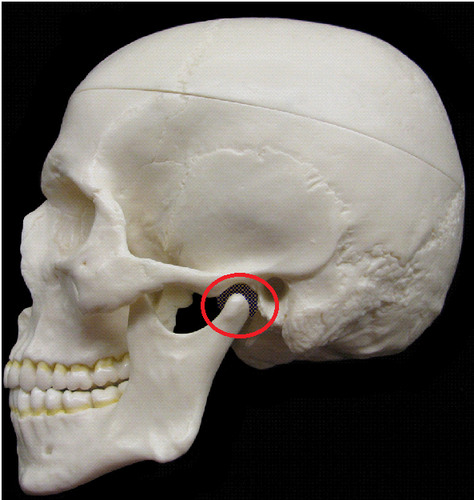
56
New cards
mandibular notch
a groove in the ramus of the mandible
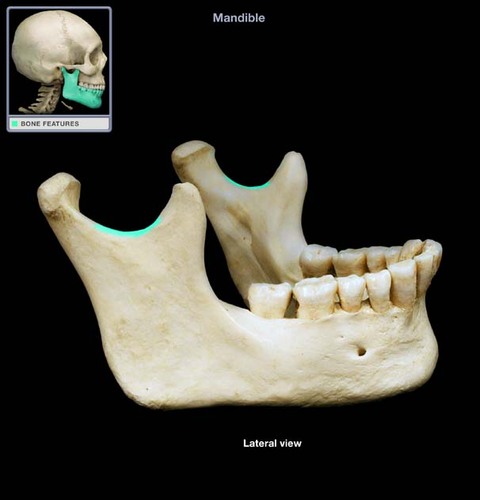
57
New cards
mandibular symphysis
halves of the mandible fuse at a symphysis to form one bone

58
New cards
mastoid process
round projection on the temporal bone behind the ear

59
New cards
mental foramen
a bilateral opening in the vestibular portion of the mandible through which nerve endings, such as the mental nerve, emerge
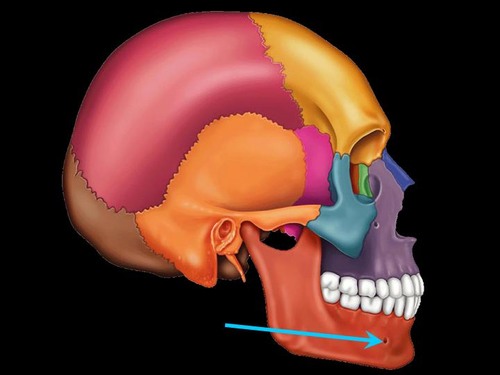
60
New cards
middle nasal concha of ethmoid bone
Bone between the superior and inferior conchae
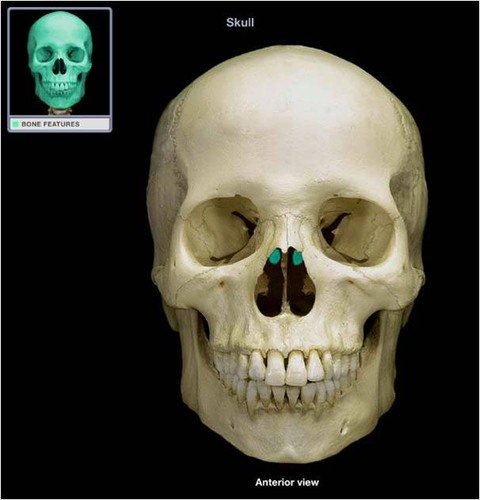
61
New cards
nuchal lines
neck muscle attachment points
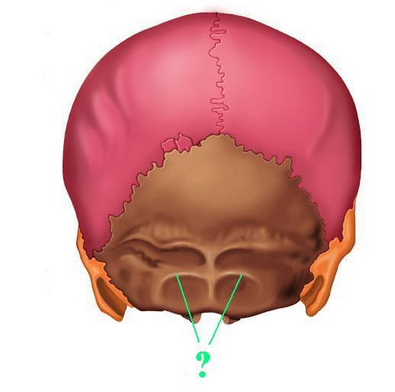
62
New cards
occipital condyles
distinctive bony structure linking the skull and the vertebral column

63
New cards
palatine process of maxilla
roof of the mouth
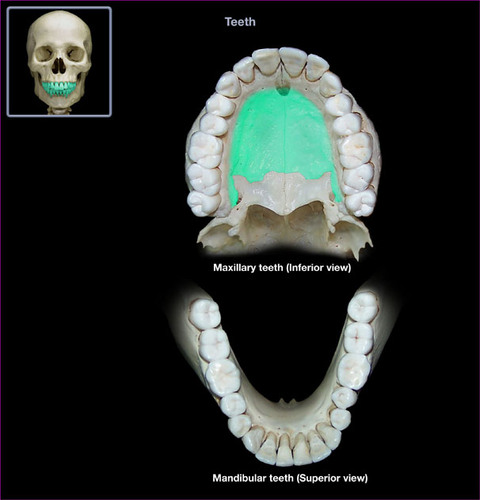
64
New cards
perpendicular plate
forms superior part of nasal septum
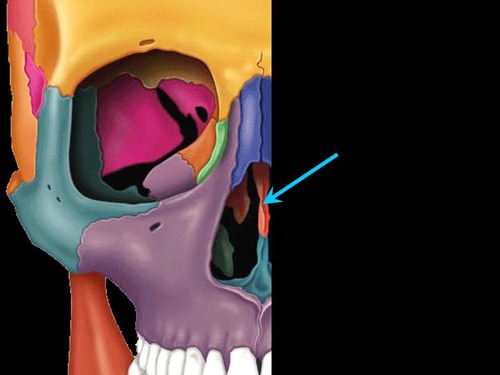
65
New cards
sagittal suture
between the two parietal bones
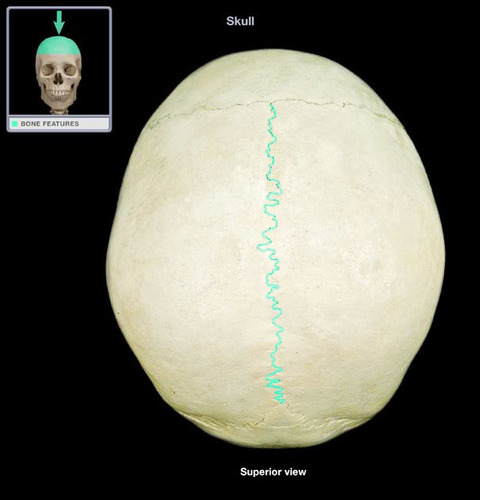
66
New cards
styloid process
pole-like process extending downward from the temporal bone on each side of the skull

67
New cards
stylomastoid foramen
a small, round opening located on the inferolateral aspect of the temporal bone, between the root of the styloid process and the mastoid process.
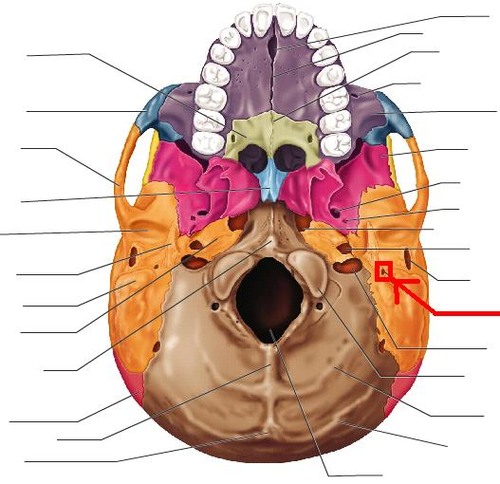
68
New cards
superior orbital fissure
a bony cleft found at the orbital apex between the roof and lateral wall.
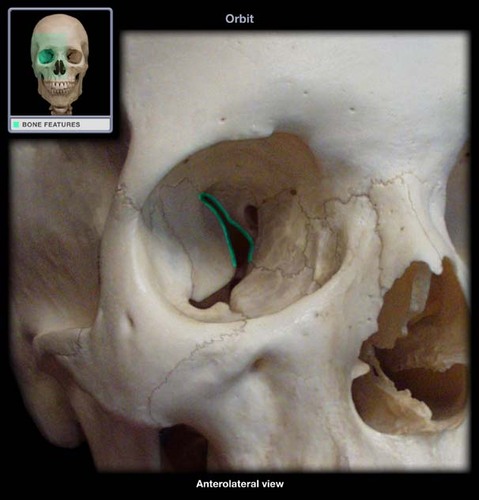
69
New cards
supraorbital foramen
a bony elongated opening located above the orbit (eye socket) and under the forehead
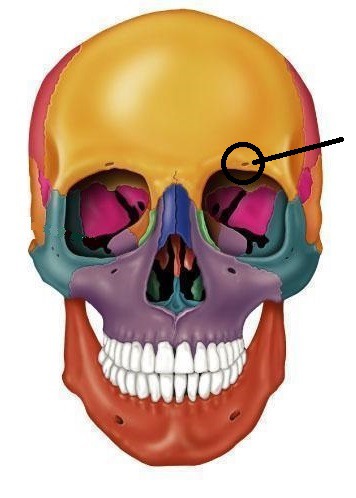
70
New cards
zygomatic process of temporal bone
a long, arched process projecting from the lower part of the squamous portion of the temporal bone
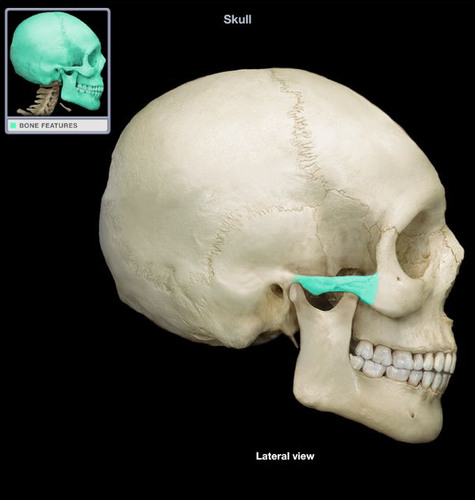
71
New cards
pterygoid process
Process of the sphenoid bone, consisting of two plates
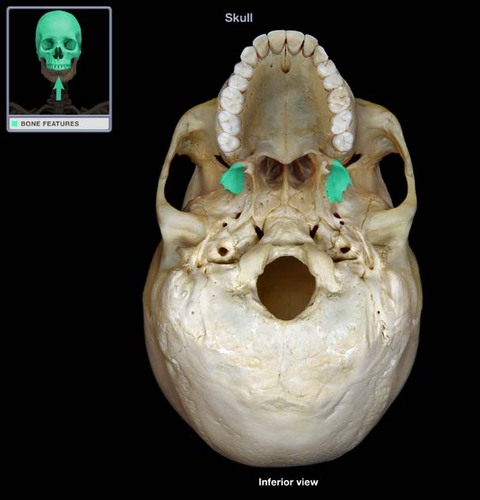
72
New cards
greater wing
a broad curved winglike expanse on each side of the sphenoid bone
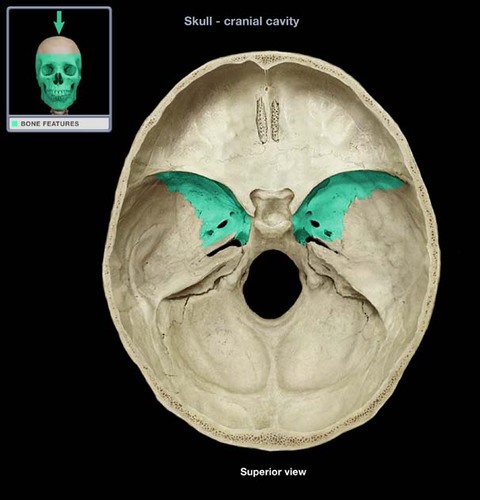
73
New cards
lesser wing
an anterior triangular process on each side of the sphenoid bone in front of and much smaller than the corresponding greater wing
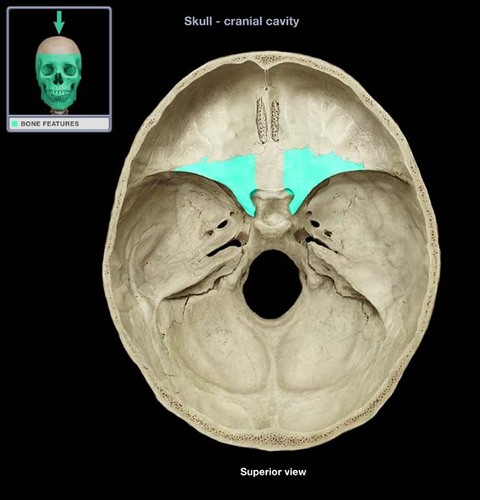
74
New cards
sella turcica
depression in the sphenoid bone where the pituitary gland is located
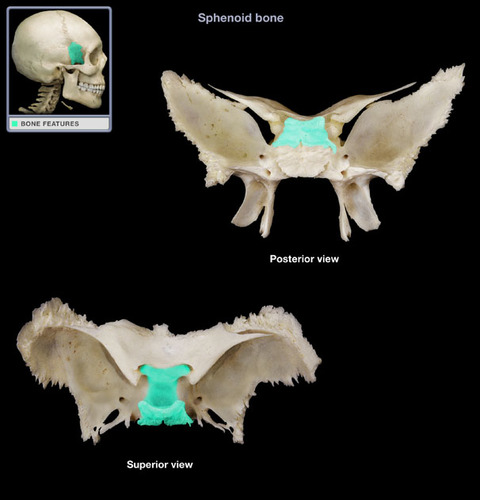
75
New cards
body of sphenoid
one of the most complex bones of the human body
wasp bone
wasp bone
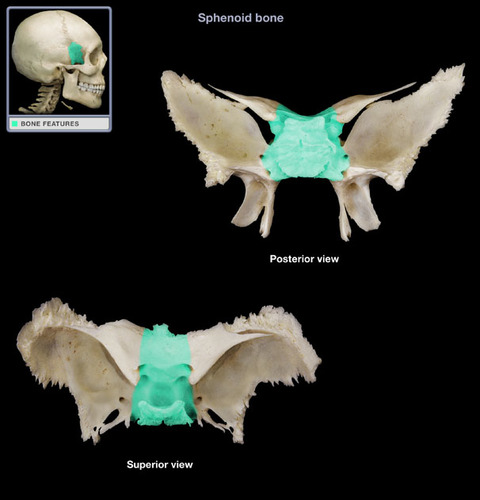
76
New cards
optic canal
allows the optic nerve to pass to the eye
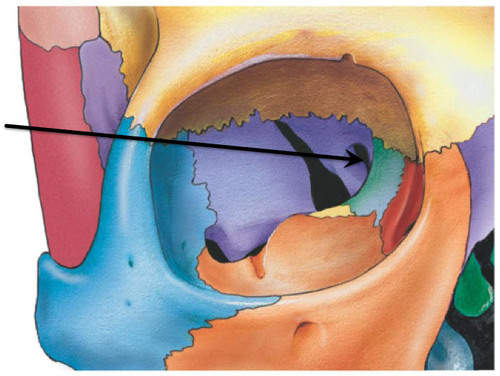
77
New cards
body of vertebrae
spine

78
New cards
intervertebral foramina
serves as the doorway between the spinal canal and periphery
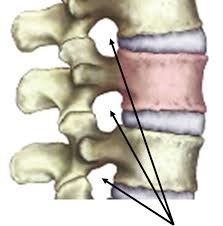
79
New cards
Iamina
flat plates of bone originating from the pedicles of the vertebral body that form the posterior outer wall of the spinal canal and protect the spinal cord.
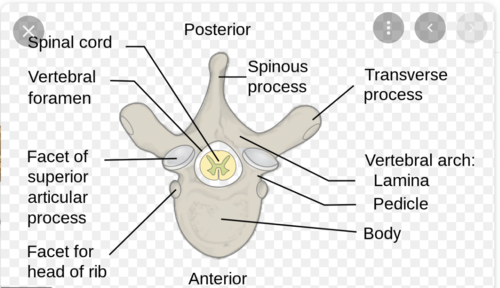
80
New cards
Pedicle
a very strong, cylindrical, anatomic bridge between the dorsal spinal elements and the vertebral body.
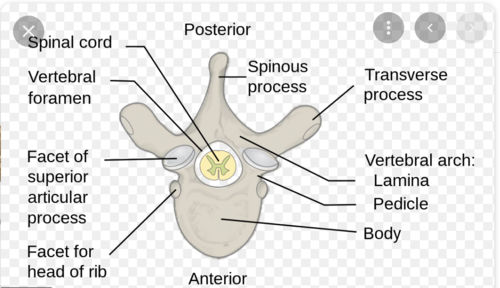
81
New cards
spinous process
a bony projection off the posterior (back) of each vertebra.
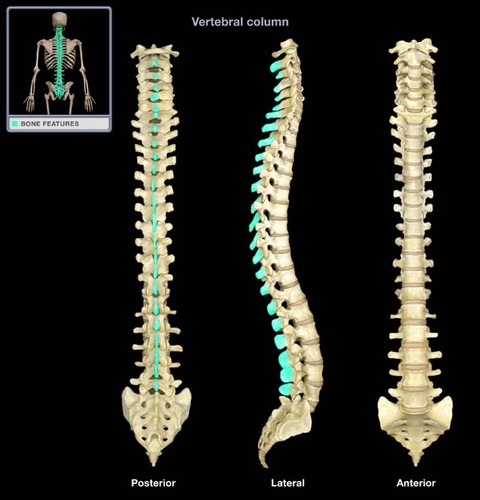
82
New cards
superior articular process
project vertically upward from the articular pillars between the pedicles and the laminae.
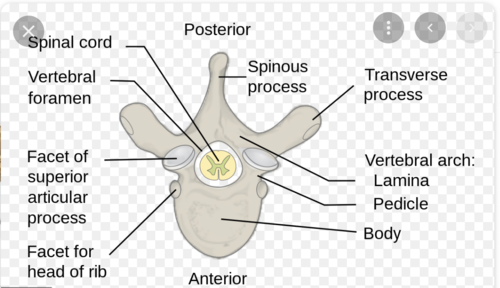
83
New cards
transverse process
a small bony projection off the right and left side of each vertebrae
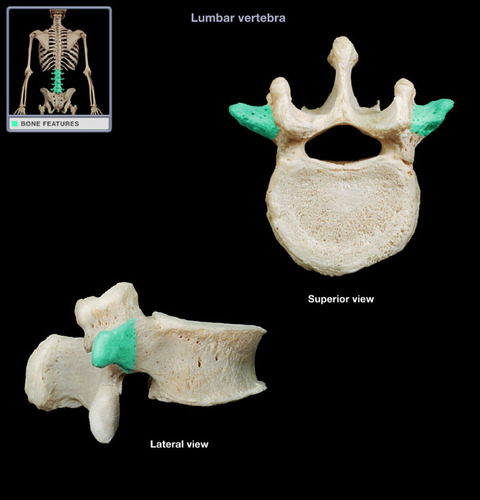
84
New cards
vertebral arch
A circle of bone around the canal through which the spinal cord passes.
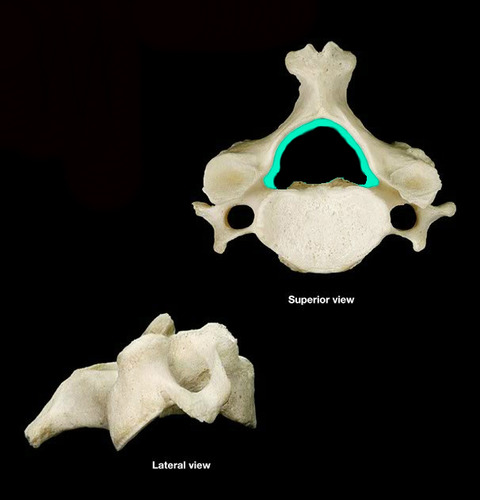
85
New cards
vertebral foramen
the foramen (opening) formed by the anterior segment (the body), and the posterior part, the vertebral arch.

86
New cards
atlas
the top bone or first cervical vertebrae connecting your skull to your spine.
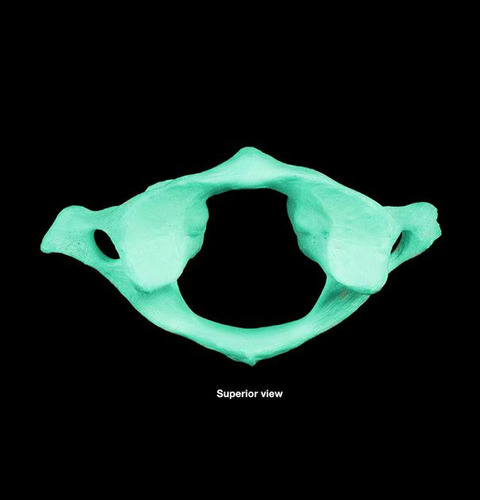
87
New cards
axis
forms the pivot upon which the first cervical vertebra (the Atlas), which carries the head, rotates
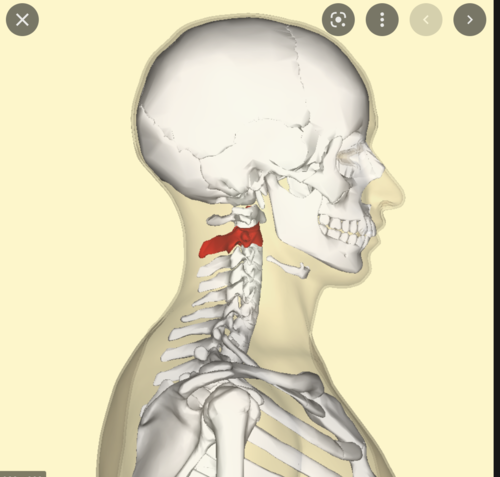
88
New cards
cervical vertebra- typical
seven components, unfused
several features distinct from those typical of thoracic or lumbar vertebrae. The most notable distinction is the presence of one foramen, in each transverse process.
several features distinct from those typical of thoracic or lumbar vertebrae. The most notable distinction is the presence of one foramen, in each transverse process.

89
New cards
thoracic vertebra
each of the twelve bones of the backbone to which the ribs are attached.
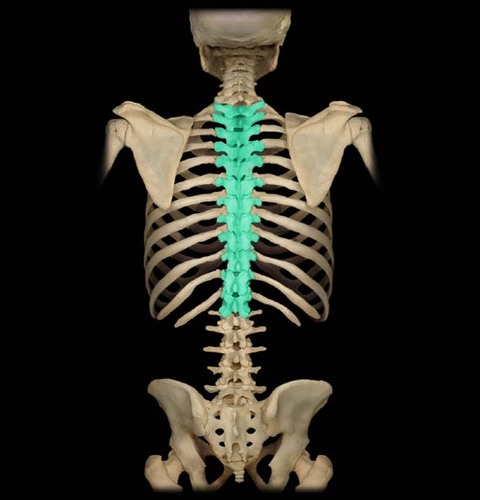
90
New cards
lumbar vertebra
consists of the five bones (vertebra) in your lower back, known as L1 to L5, are the largest of your entire spine, located below your 12 chest (thoracic) vertebra
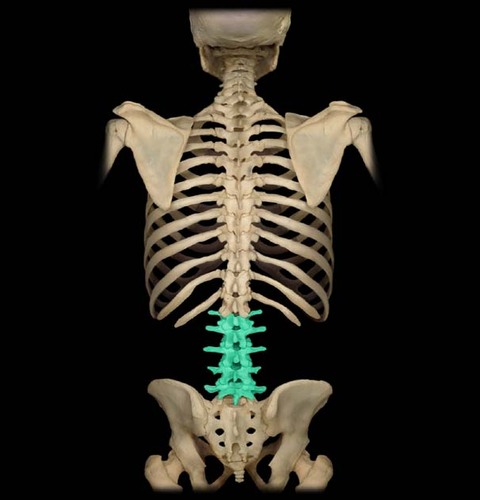
91
New cards
vertebra prominens
the name of the seventh cervical vertebra, C7
attached to thoracic lumber, bottom of the neck
attached to thoracic lumber, bottom of the neck
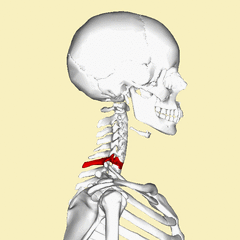
92
New cards
Transverese Foramen
an opening that is occupied by the vertebral artery and vein in the first six vertebrae and only the vertebral vein in the seventh.
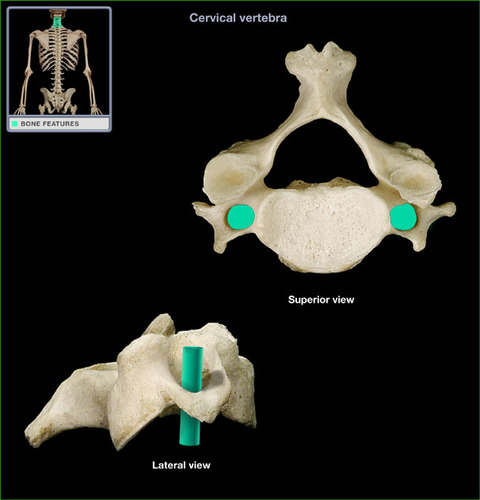
93
New cards
odontoid process (dens)
a superior projecting bony element from the second cervical vertebrae (C2, or the axis).
in the neck
in the neck
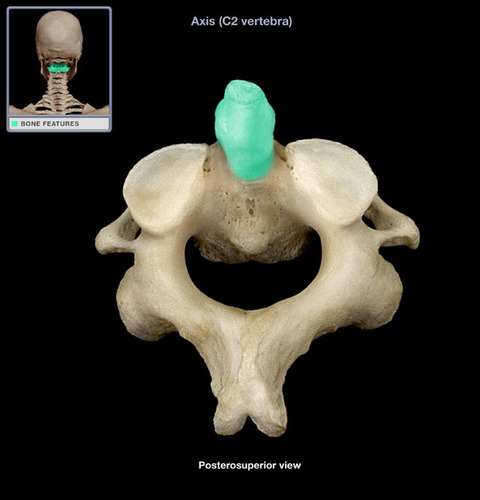
94
New cards
lateral masses
the bony junction between the superior and inferior articular processes, separated medially from the lamina by the medial facet line
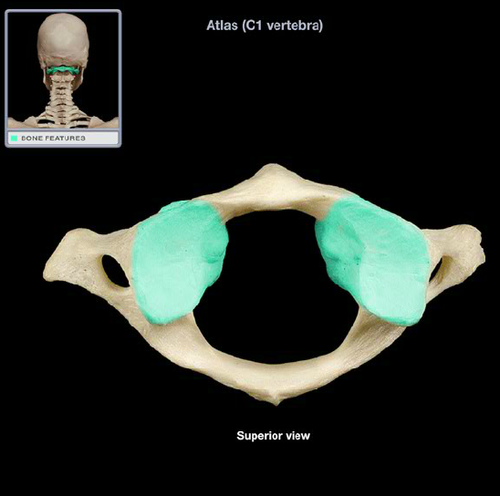
95
New cards
lumber curvature
the inward curve of the lumbar spine (just above the buttocks).
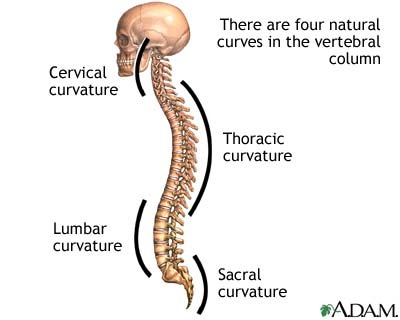
96
New cards
thoracic curvature
excessive forward curvature of the spine in the upper back.
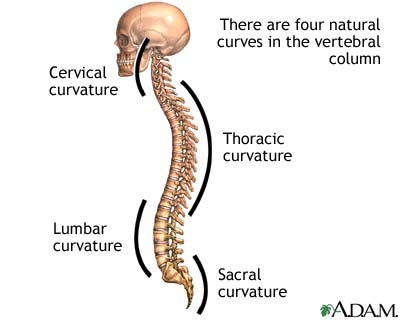
97
New cards
cervical curvature
occurs when your cervical spine is straight or curves toward your front instead of its natural curve to your back (neck)
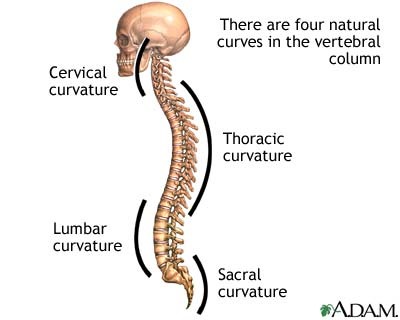
98
New cards
clavicular notch
Site where manubrium articulates with the clavicles
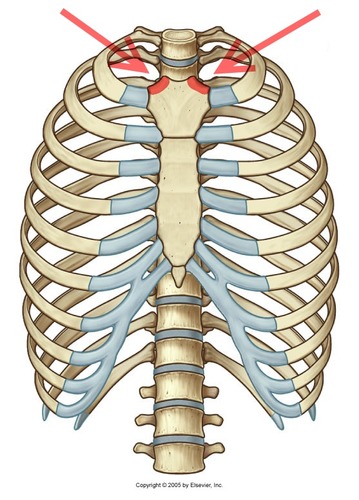
99
New cards
costal cartilage
the cartilages that connect the sternum and the ends of the ribs

100
New cards
juglar notch
central indentation in superior border of manubrium
(dip in neck)
(dip in neck)
